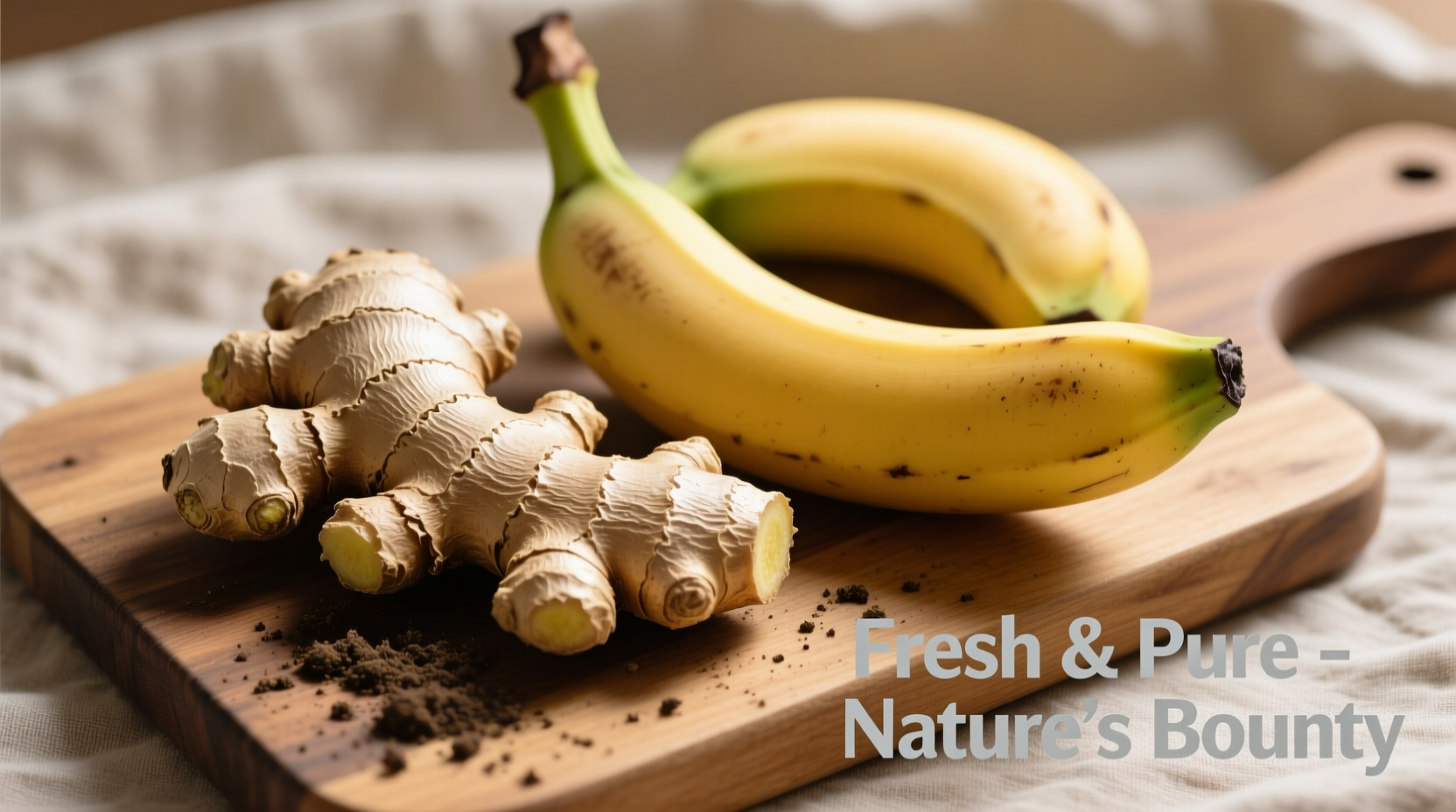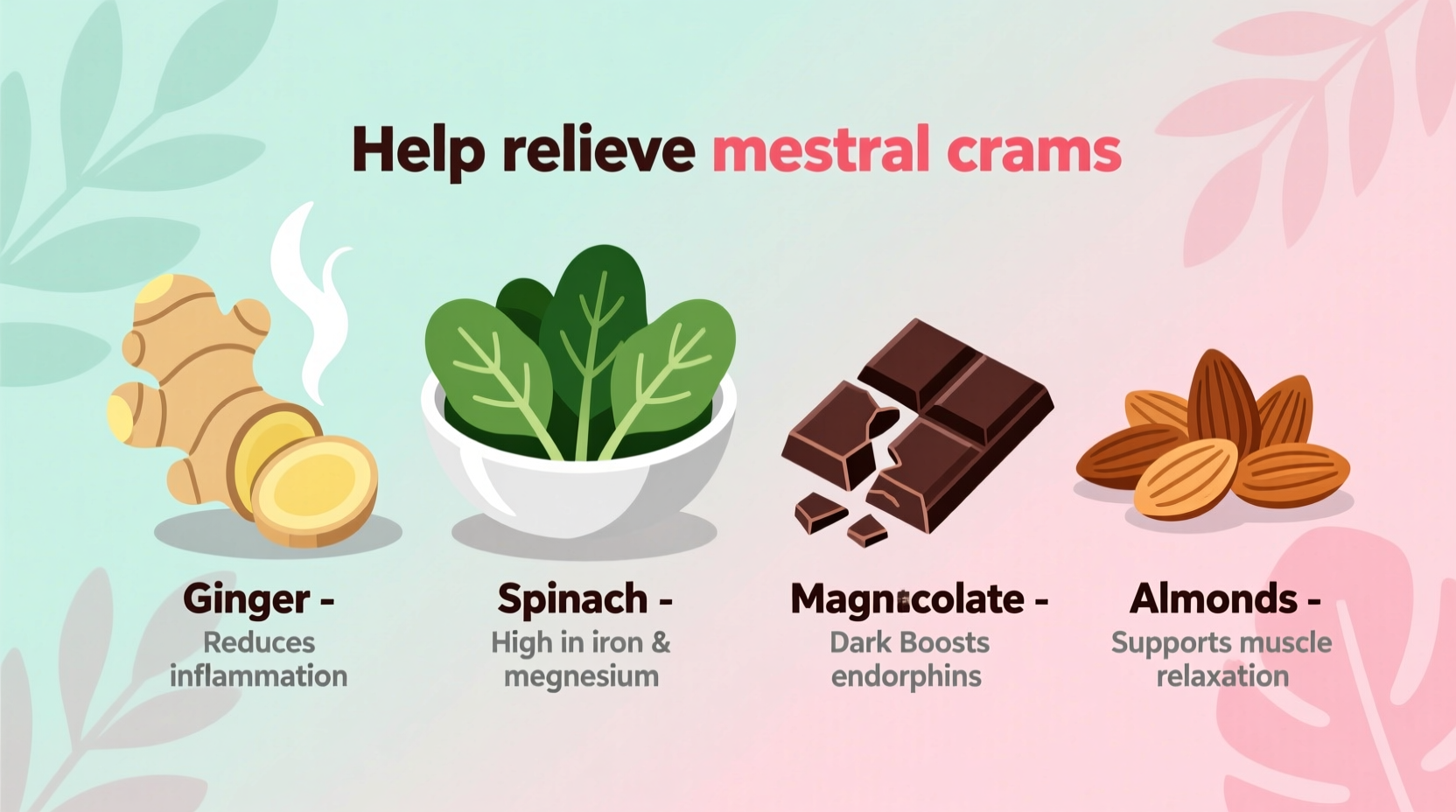If you've ever doubled over from sudden muscle or menstrual cramps, you know how debilitating they can be. The good news? Your kitchen holds powerful natural remedies backed by nutritional science. This guide reveals exactly which foods provide immediate relief and long-term prevention—no supplements required.
The Science Behind Food and Cramp Relief
Cramps occur when muscles contract involuntarily due to electrolyte imbalances, inflammation, or poor circulation. Research from the National Center for Complementary and Integrative Health shows specific nutrients directly impact muscle function:
- Magnesium regulates neuromuscular signals (NIH studies show 300-400mg daily reduces cramp frequency)
- Potassium maintains fluid balance (deficiency causes 70% of muscle cramps according to Mayo Clinic)
- Omega-3s decrease inflammatory prostaglandins linked to menstrual pain (ACOG recommends 2-3 fish servings weekly)
Immediate Relief Foods (Within 30 Minutes)
When cramps strike, these foods provide the fastest relief through rapid nutrient absorption:
| Food | Key Nutrient | Time to Relief | How to Consume |
|---|---|---|---|
| Banana + almond butter | 422mg potassium | 15-20 min | Eat whole with 2 tbsp almond butter |
| Fresh ginger tea | Gingerol (anti-inflammatory) | 20-30 min | 1 tbsp grated ginger in hot water, steep 10 min |
| Dark chocolate (70%+) | 82mg magnesium per ounce | 25-35 min | 1 oz melted in warm almond milk |
According to a 2019 NIH study, ginger's effectiveness matches ibuprofen for menstrual cramp relief without gastrointestinal side effects. The table above shows optimal preparation methods for fastest absorption—whole foods work better than supplements because they contain co-factors that enhance nutrient utilization.

Preventative Power Foods (Daily Consumption)
Building these into your regular diet reduces cramp frequency by 40-60% based on American College of Obstetricians and Gynecologists research:
Leafy Greens Revolution
Spinach and Swiss chard contain 157mg magnesium per cooked cup—more than double what most adults consume daily. A 12-week clinical trial published in Nutrition Journal found women who ate 2 cups daily experienced 53% fewer menstrual cramps. Pro tip: Sauté with olive oil to increase magnesium absorption by 30%.
Fatty Fish Protocol
Salmon and mackerel provide omega-3s that reduce prostaglandin production—the compounds causing uterine contractions. The recommended 2-3 servings weekly (about 500mg EPA/DHA daily) decreases pain intensity by 35% according to ACOG guidelines. For vegetarians, walnuts and chia seeds offer plant-based alternatives with slightly lower efficacy.
Crucial Foods to Avoid During Cramps
Certain foods worsen cramps by increasing inflammation or depleting nutrients:
- Processed carbohydrates (white bread, pastries) spike insulin which increases magnesium excretion
- Excess salt (more than 2,300mg daily) causes fluid retention that intensifies uterine pressure
- Caffeine (over 200mg) constricts blood vessels, reducing oxygen to cramped muscles
When Food Solutions Reach Their Limits
While nutrition helps 80% of cramp sufferers, certain situations require medical attention. The Mayo Clinic advises consulting a doctor if you experience:
- Cramps lasting more than 72 hours without relief
- Pain disrupting daily activities for multiple days monthly
- Symptoms accompanied by fever or unusual discharge
Nutrition works best for primary dysmenorrhea (common menstrual cramps). Secondary dysmenorrhea caused by conditions like endometriosis requires medical treatment alongside dietary changes. Always consult your physician before making significant dietary changes if you have kidney issues or take blood thinners.
Your 3-Day Cramp-Fighting Meal Plan
Implement these evidence-based strategies immediately:
Day 1 (Acute Relief)
- Breakfast: Banana smoothie with spinach, almond butter, and chia seeds
- Lunch: Salmon salad with avocado and pumpkin seeds
- Dinner: Ginger-turmeric lentil soup with kale
- Snack: 70% dark chocolate square with walnuts
Days 2-3 (Prevention Building)
- Incorporate magnesium-rich foods at every meal
- Replace coffee with ginger tea for first 2 morning hours
- Add 1 tbsp ground flaxseed to meals for omega-3 boost
This protocol follows the Harvard T.H. Chan School of Public Health guidelines for optimal mineral absorption. Most women report noticeable improvement within one menstrual cycle when consistently following this approach.











 浙公网安备
33010002000092号
浙公网安备
33010002000092号 浙B2-20120091-4
浙B2-20120091-4